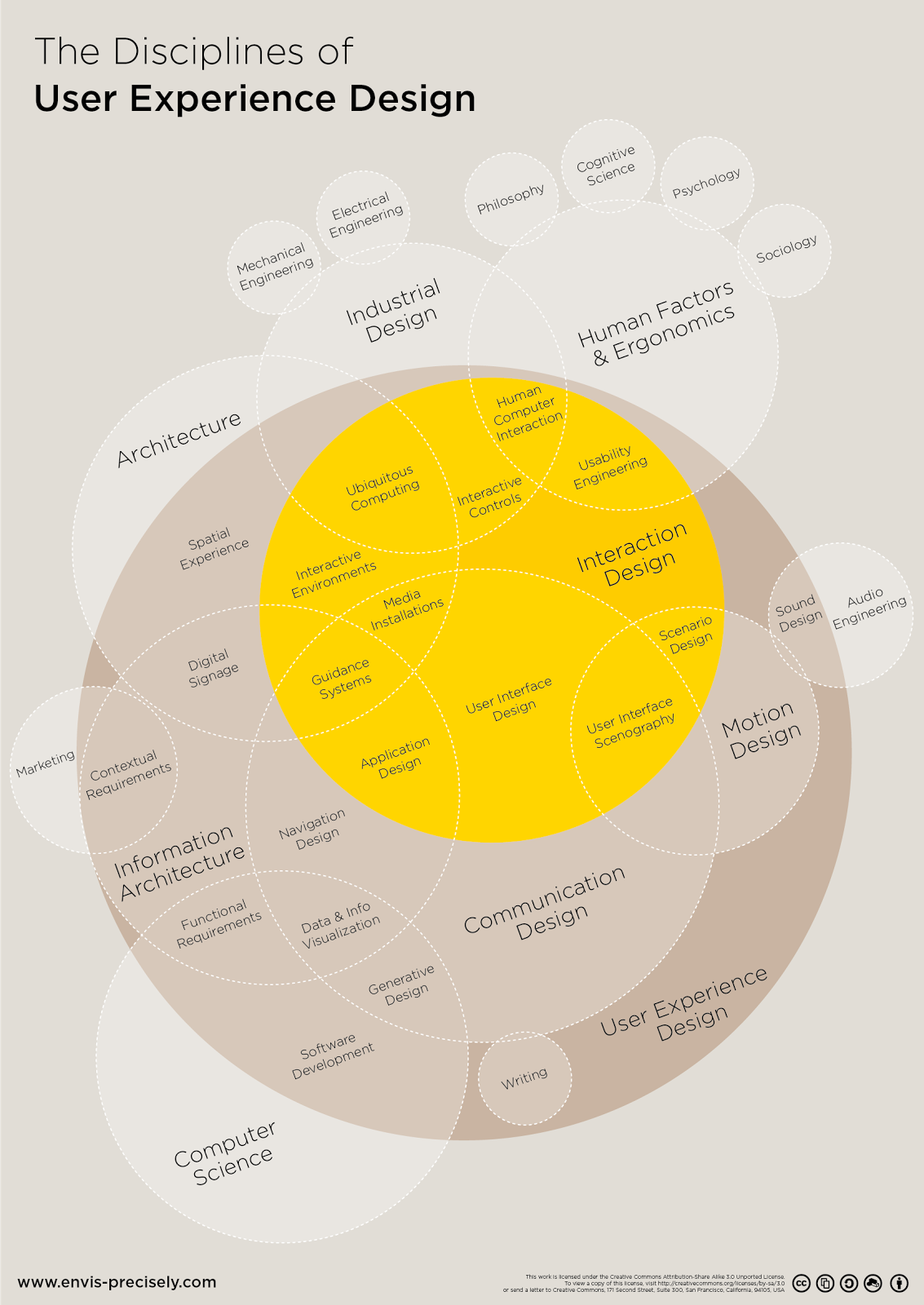User experience, or UX, is a phrase that is frequently used in the design and technology industries today.
It’s vital to note that there is no universally acknowledged definition of UX design. A broad concept such as user experience design encompasses a variety of disciplines, including interface design, information architecture, graphic design, usability, and human-computer interaction. But let’s attempt to clarify what that implies.
If you’re new to UX, this article will give you a basic introduction and overview. We’ll discuss what UX is, what it encompasses, and how to get started with it.
What Is UX?
The goal of UX is to have a thorough awareness of people, their needs, values, abilities, and constraints. It also considers the organisation’s goals and the objectives of the team managing the project.
Simply put, it’s the process of designing products with the user in mind. Everything from the initial conception of an idea to the final product is taken into account, and the user’s needs are always kept in mind. UX is all about making sure that the user has a good experience when using a product. This means that everything from the way something looks to how it works is considered. The goal is to create a product that is easy to use and meets the user’s needs.
The History of UX
But, it’s not just about making things look pretty. UX is rooted in psychology and design thinking, which means that it’s about understanding human behaviour and creating solutions that meet people’s needs. And it’s been around for a long time.
Some of the most fundamental principles of user experience may be traced back to 4000 BC to the ancient Chinese philosophy of Feng Shui, which focuses on arranging your environment in the most optimal, harmonious, or user-friendly manner. Likewise, there is evidence that ergonomic design principles were used by Ancient Greek civilizations to create their tools and workplaces as early as the 5th century BC.
The first individual with the term “UX” in his job description was cognitive scientist Don Norman, who joined the Apple team in the early 1990s as its User Experience Architect. He coined the phrase “user experience design” to encompass “all aspects of the person’s encounter with a system, including industrial design, graphics, the interface, the physical interaction, and the manual.” The video below features Norman discussing the definition of UX, its history, and appropriate and inappropriate uses.
Heard of UX Design?
The word “design” is usually always used after UX. People who work in this discipline are “UX designers” by definition of the word.
Does this imply that those who develop user experiences are known as UX designers? No, it is not. User experience cannot be designed because it refers to a user’s impression of a product. However, you can make circumstances that are more likely to result in a favourable impression. In other words, UX designers are those who design with user experience in mind.
UX design, put more simply, is the process of developing useful and usable things, whether they be digital or real. In Peter Morville’s UX honeycomb, the desired qualities are further broken down as follows:
- Usable: A product needs to be simple, easy to use, and familiar.
- Useful: A product must fill a need. If the product isn’t filling a perceived gap in the users’ lives, then there is no real reason for them to use it.
- Desirable: The visual aesthetics of the product need to be attractive and evoke positive emotions.
- Findable: If the user has a problem with a product, they should be able to quickly find a solution.
- Accessible: The product or service needs to be accessible to everyone, including those with disabilities.
- Credible: The company and its products need to be trustworthy.
UX Design Disciplines
UX is a broad umbrella term that may be broken down into four primary disciplines: Experience Strategy (ExS), Interaction Design (IxD), User Research (UR), and Information Architecture (IA).
Experience Strategy (ExS)
UX design is not just about the customer; it also has significant benefits for the company selling the good or service. The goal of the experience strategy is to create a comprehensive business plan that considers both the demands of the organisation and the customers.
Interaction Design (IxD)
All interactive features, including buttons, page transitions, and animations, are considered while designing interactions with a system. The goal of interaction designers is to produce simple designs that make it simple for users to carry out essential jobs and behaviours.
User Research (UR)
Finding a problem and designing a solution are the two main components of UX design. In-depth research and input from current or potential customers are required for this. In order to comprehend the demands and goals of the end user, UX designers will launch surveys, carry out interviews and usability testing, and construct user personas. In order to make wise design decisions, they collect both qualitative and quantitative data.
Information Architecture (IA)
The discipline of organising information and material in a meaningful and approachable fashion is known as information architecture. This is essential for assisting the consumer in navigating a product. Information architects take into account the relationships between various kinds of content while determining the IA of any given product. Additionally, they focus on the language being utilised and make sure that it is persuasive and consistent.
There are numerous sub-disciplines that fall under each of these four categories. User experience design requires so much more than just drawing and wireframing, as you can see in the figure below. It is an interdisciplinary field that incorporates ideas from other disciplines, including computer science, communication design, usability engineering, cognitive science and psychology.

Image Source: What Is User Experience (UX) Design? Everything You Need to Know
The UX Design Process
There isn’t a standard workflow that all UX and product teams adhere to because different products, users, and internal processes exist.
For instance, some teams adhere to the Lean UX approach, which involves three major stages:
- THINK: Teams employ user input, usage and product data, competition analysis, and other research to pinpoint obstacles and pain areas, and then come up with ideas for how to improve the product to address issues for their consumers.
- MAKE: Designers and developers incorporate the modification or new feature into the final product.
- CHECK: Teams test if a change or new feature enhances UX and addresses the user’s initial issue by using surveys, A/B or multivariate (MVT) testing, among other tools and techniques.
Similar to other design processes, the fundamental UX process we present below is divided into five parts to highlight the periodic, iterative nature of UX design:
1) Research and understanding
Before any designs are mocked up, thorough UX research must be conducted.
To keep the UX design process centered on consumers, conduct user research to uncover their needs, goals, obstacles, and other characteristics. Then, create detailed user personas that inform design choices.
Research the market, similar goods that are already on the market, what characteristics they have in common with your product in terms of UX, and possibilities to differentiate your offering based on UX.
Understanding your product’s past will help you make better design decisions in the future, prevent mistakes from happening again, and continuously enhance the UX of your product based on what you’ve discovered.
2) Prototyping and wireframing
A designer develops a prototype and wireframe of your product after the research phase, illustrating how users will move between features and elements and how the product will seem visually.
Your minimal viable product (MVP) is the version of your product that has the bare minimum of features required for testing and user input. Although a prototype typically doesn’t look like a finished product, it might give you an idea of how it will operate.
Before investing resources in finalising your product, prototyping and wireframing allow you to gather insightful customer input. This could help you avoid wasting time and effort designing the incorrect features and UX for your users.
3) Testing
After that, your product team will do user testing, including A/B tests, MVTs, and split tests, to find any current or potential design flaws that can frustrate customers. Your team might discover, for instance:
- Users are unable to achieve their objectives due to the UX’s confusion
- Because users aren’t interested in them, some features aren’t worth further developing
- Certain user behaviours cause friction in the use of the product
Utilising technologies for product experience and behaviour analytics, such as heatmaps and session recordings, as well as gathering user input that can assist uncover obstacles and pain areas are some examples of user testing (more on this later).
4) Launch
You’ll make adjustments and final touches to your prototype throughout the testing process based on the results and user input. When your product is ready, you might launch it gradually.
For instance, before rolling out a new design to your whole user base, your UX team may deploy a beta version or “soft launch” to a select number of users in order to gather extra user feedback and usage statistics.
5) Iteration
More testing happens after the product is out since UX design is an ongoing, iterative process.
Your team will keep making adjustments and improvements as necessary during the iteration phase while attentively observing how these changes affect the user experience. This stage frequently includes A/B and multivariate testing so your team can assess the effects of product modifications and contrast several design iterations to determine which offers the best user experience. The winning version is then released.
A Comprehensive UX Training to Help You Get Started
UX is all about making sure that a user has the best possible experience when interacting with a product or service. It’s about taking into account all aspects of the user’s interaction, from initial contact to long-term use. If you’re looking to learn more about user experience, or to add UX to your skillset, our course – Professional Certificate in User Experience (UX) is a great place to start. It covers the basics of what UX is and how it can be applied, as well as hands-on exercises and activities for you to learn from.
For enquiries, please contact us at (65) 6720 3333 or training.aventis@gmail.com

